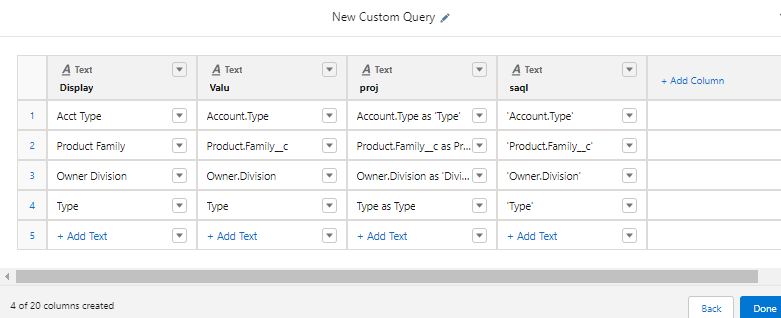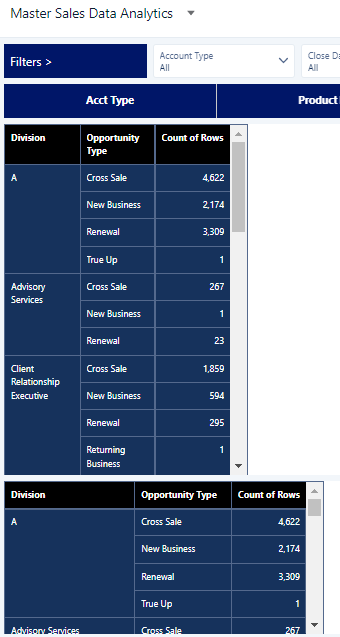|
So client wants 2 snapshot dates populated . Snap1 is the most recent snapshot--easy enough to accomplish by a query sorted in ascending order which takes the most recent one and puts it in snap1list selector. The 2nd snapdate is 1 year back. This can be done by populating the 'start' attribute in dashboard JSON with a results from query 'q_oneYrBack_1'.
"start": "{{cell(q_oneYrBack_1.result,0,\"sd2\").asString()}}" "q_oneYrBack_1": { "broadcastFacet": true, "groups": [], "label": "q_oneYrBack", "numbers": [], "query": "q = load \"zds_completeOpptys_v2\";\nq = filter q by date('SnapshotStamp_Year', 'SnapshotStamp_Month', 'SnapshotStamp_Day') in [\"365 days ago\"..\"365 days ago\"];\nq= group q by 'SnapshotStamp';\nq = foreach q generate 'SnapshotStamp' as 'sd', substr('SnapshotStamp',2,10) as 'sd2';", "receiveFacetSource": { Sd2 resolved to text in yyyy-MM-dd format (hence the 10 character string in the substr function).
0 Comments
AS a followup to the March 3, 2021 blog regarding creating a flex-grid where the pivots are dynamic.. sorta like OLAP. Below is code for using saql as opposed to aggregate. Here is a snip of the custom query. Pay attention to the saql column and notice the ' ' on the API names. After it is the snip of the saql query.
q = load \"x_MasterSalesData\";\nq = group q by ({{column(static_2.selection,[\"saql\"]).asObject()}});\nq = foreach q generate {{column(static_2.selection,[\"saql\"]).asObject()}}, count() as 'count';\n" |
Archives
June 2025
|


